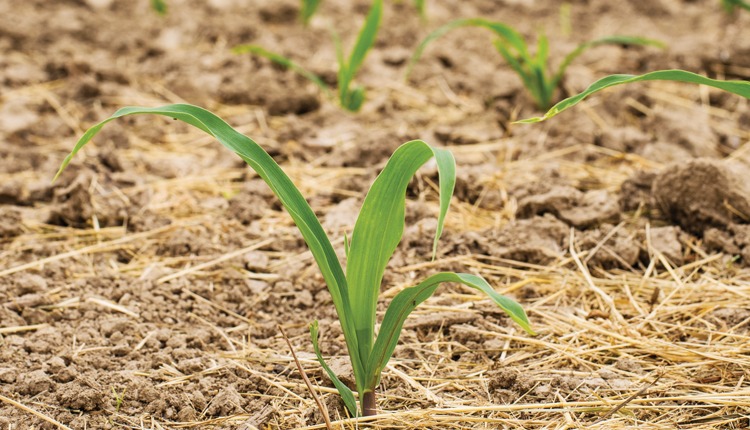Thomas is retired from the William H. Miner Agricultural Research Institute and president of Oak Point Agronomics Ltd. Wiersma is the alfalfa business manager with Corteva Agriscience.

Many farmers who wouldn’t dream of eliminating nitrogen fertilizer application to corn or potash application to alfalfa will ignore soil pH until it becomes an obvious — and sometimes visible — problem. Perhaps farmers would pay more attention to monitoring soil pH if they considered lime to be a fertilizer, which it is!
The economical choice
Several nutrients become less plant-available as pH falls below a certain level. This is particularly true with phosphorus, with availability that begins to drop as soil pH falls below 6.5. The combination of low soil phosphorus levels and low pH is a “double whammy” that can significantly reduce crop yield. Nitrogen and potassium are slightly less sensitive to low soil pH than is phosphorus. Nitrogen and potassium are fully plant-available at a pH of 6, but their availability declines if pH falls below that level.
One way to counteract this is to raise fertilizer rates, but even before the huge price runs in fertilizer, it has always been much more economical to apply lime. As the price of fertilizer rises, so does the “acid soil penalty.”
Farmers relying primarily on commercial fertilizer (instead of manure or plowed-down alfalfa) to supply nitrogen for corn production sometimes find soil acidity sneaking up on them. On average, it takes 3.6 pounds of ag lime to neutralize the acidity resulting from 1 pound of nitrogen applied as anhydrous ammonia, urea, or a UAN solution. Twice as much lime is needed to neutralize 1 pound of nitrogen applied as ammonium sulfate, an increasingly popular fertilizer since atmospheric depositions of sulfur have fallen considerably in the past 20-plus years.
These amounts refer to lime with 100% Effective Neutralizing Value (ENV); if the ag lime available locally has an ENV of 75%, for instance, one-third more lime would be needed to do the job. For some soils, applying 200 pounds of fertilizer nitrogen per year during corn production can drop soil pH out of the “sweet zone” in just a few years.
Consequences of low pH
One of the lesser-recognized reasons to maintain a recommended pH is because some commonly-used herbicides are less effective when soil pH drops much below 6. This is particularly true for sulfonylurea herbicides and some triazine herbicides including atrazine. As soil pH drops, these herbicides become increasingly bound (adsorbed) to soil particles, making them less available to control weeds.
We know of one case where a farmer continued planting corn (and applying nitrogen fertilizers), relying primarily on triazine herbicides for weed control. Annual grasses were becoming a problem, so he rotated out of corn and seeded the field to alfalfa. The fall prior to seeding, he had the soil tested and was shocked to find that the pH was 5.6, so he applied several tons of agricultural limestone per acre and tilled it in.
The following spring, the farmer seeded alfalfa but became concerned when the alfalfa seedings started showing signs of triazine toxicity. Apparently what happened is that the acidity in the soil had been tying up some of the triazine herbicide, but when the farmer limed the field the pH rose — just in time for the triazine residues to become plant-available and damage his alfalfa seeding.
A steady investment
Fertilizer prices were at all-time highs in 2022, and though prices have come down, they’re still at historically high levels. However, one product’s price that hasn’t skyrocketed is ag lime, and it should be rated as a “best buy.” Applying lime to maintain a pH of at least 6.5, and at least 6.8 if alfalfa is included in the rotation, will improve nutrient availability, herbicide effectiveness, and the overall cost of crop production.










